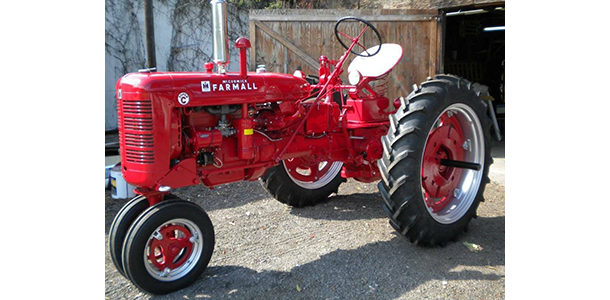I think especially since we lost Dad to a farm shop accident nearly nine years ago, tractors that were linked to him are highly treasured.
I have the first “store-bought” tractor Dad purchased in the spring of 1952: a Farmall Super C. Prior to that, Dad had a homemade tractor he had cooked up using for the most part an old Ford Model A. The only word I remember being used when family would reminisce about that tractor was “dangerous.”
Word of Dad’s concocted tractor won him a job at the local International Harvester dealership when he turned out to be 4F (Dad was nearly blind, which disqualified him from military service), and the local draft board chairman hired him on the spot. The year was 1943.
I had Dad’s little Super C restored to what I feel is better-than-new condition. A local sheet metal artist (the most accurate way to describe him) sandblasted and painted a pretty much mechanically sound machine, and the results are amazing.
Your own restoration project really depends on your intentions for the equipment in question. If you are going to use the piece on the farm as a working implement, a high-dollar paint job might not but advised; however, it is true that paint is one area where you get what you pay for.
It is also true that, not unlike the construction of a house, a good foundation is necessary to get good results on the outward appearance of any implement restoration.
One thing I found is that there are many friends out there who are willing to help you fulfill your project. Our old C had a belly-mounted sickle bar mower made by a manufacturing company in Nebraska that is still in business.
In my inquiry into the mower restoration, I found that while the exact pigment of the paint the company uses is not readily available, they were willing to paint a piece of scrap metal and send it to me to match at our local auto parts supplier … nice folks indeed.
Which brings us to one important issue in restoration: Accuracy pays dividends. I see old Farmalls painted every shade of red, from pink to maroon, and the same holds true for other makes as well.
If the tractor is not leaving the farm, one might say, “Who cares?” But I think about the mower from the Super C and think, “What if no one was left to help guide the owner to the desired end product?”
Mechanically, some folks just cringe at the notion of such “improvements” as converting to higher voltages or installing modern electronics. I kept our Super C as a six-volt, but I did re-route the ground cable to the starter instead of its former spot on the steering pedestal.
Its past location could sometimes rust or work loose, leading to a faulty ground and slower starter speeds.
One thing that needs to be debated is the issue of fuel. I have a source of pure gas, and some go as far as to use aviation fuel, claiming it never goes “bad.”
Today’s ethanol blends are frequently blamed for issues with antique tractors, motors and power units. For my part, I am just not willing to find out.
In closing, antique equipment is a passion of mine, but I also think it is important to highlight and compare modern (even ultra-modern) examples of farm machinery alongside the old iron whenever possible.
Too often, we discuss agriculture with a public that sees us as old-fashioned and outdated. It is great to celebrate our heritage, but our future is where we are all headed. It is up to each of us, individually and collectively, to show our customers that agriculture is “In-Dus-Try,” not “In Duh Way.” FG
Andy Overbay holds a Ph.D. in ag education and has more than 40 years of hands-on dairy and farming experience.
PHOTOS
Restoring vintage equipment is a celebration of heritage, and there’s no right way or wrong way to do it – only “your” way. Photos courtesy of Andy Overbay.










